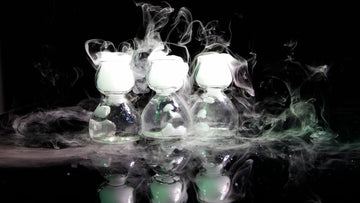Dry ice, which is solid carbon dioxide at extremely low temperatures, has several applications in the medical field due to its unique properties. Here are some examples:

Transportation of Biological Samples and Vaccines:
Dry ice is commonly used to transport biological samples, vaccines, and other temperature-sensitive medical supplies. Its extremely cold temperature (-78.5°C or -109.3°F) helps maintain the necessary temperature conditions during transportation, ensuring that samples and vaccines remain frozen.
Cryotherapy:
Dry ice can be used for cryotherapy, a medical treatment that involves applying cold temperatures to treat various conditions, such as removing warts, skin lesions, and even certain types of cancerous tissues. The extreme cold of dry ice can freeze and destroy abnormal cells.

Storage of Biological Materials:
Dry ice is used to store biological materials, such as tissue samples, cells, and blood products, in laboratories and medical facilities. It helps preserve these materials at ultra-low temperatures without the need for specialized freezers.
Pain Relief and Inflammation Reduction:
In sports medicine and rehabilitation, dry ice packs can be applied to reduce pain, swelling, and inflammation in injured areas. The cold from the dry ice helps numb the area and constrict blood vessels, which can alleviate discomfort.
Histology and Pathology:
Dry ice is used in histology and pathology laboratories to help preserve tissue samples before they are sectioned for microscopic examination. Placing tissue samples on dry ice can slow down the decomposition process, making it easier to prepare them for analysis.

Dermatology Procedures:
Dry ice is used in dermatology for procedures such as cryotherapy for the removal of skin tags, warts, and certain types of skin lesions. The cold temperature causes the targeted tissue to freeze and eventually fall off.
Laboratory Research:
Dry ice can be used in various laboratory processes, such as creating a controlled environment for certain chemical reactions or for freezing and preserving samples for later analysis.
Carbon Dioxide Inhalation Tests:
In some medical tests, patients are asked to inhale controlled amounts of carbon dioxide gas. Dry ice can be used as a source of carbon dioxide for such tests, ensuring the purity and controlled release of the gas.
DNA Extraction and Preservation:
Dry ice is used to preserve and transport DNA samples during genetic testing and research. The cold temperature helps prevent degradation of DNA molecules, maintaining their integrity for accurate analysis.

Preservation of Organs for Transplant:
Dry ice can be used to preserve organs intended for transplantation. The low temperature of dry ice can slow down the metabolic processes of the organ, extending the viability of the organ and allowing for more time between harvest and transplant.

It's important to note that while dry ice has numerous applications in the medical field, its handling requires proper safety precautions due to its extremely low temperature and the potential for carbon dioxide gas buildup in confined spaces.
If you need dry ice, Baker's Gas and Welding has you covered! We supply dry ice to greater metro Detroit and surrounding areas. If you're looking for more info, please fill out our request form by clicking the following link!




